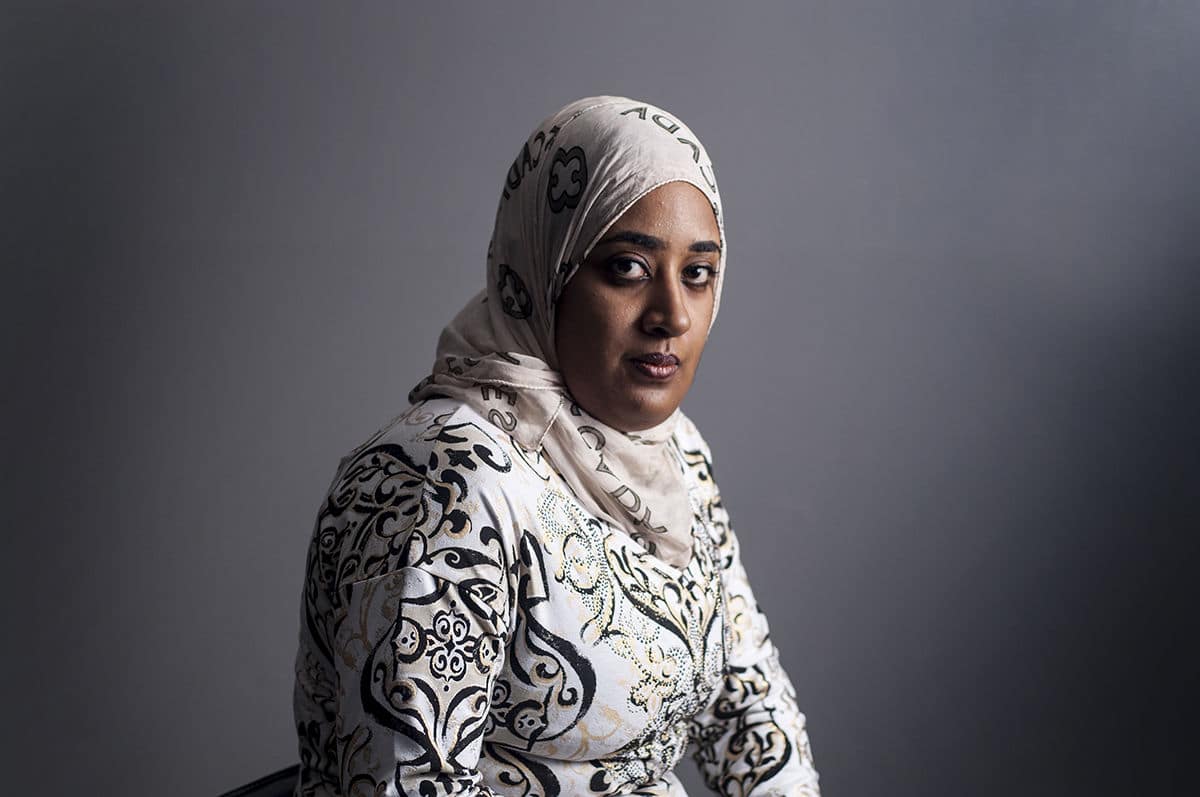by Dennis Dalman
news@thenewsleaders.com
A woman named Zaina is sitting in a room against a plain dark gray wall. Her large brown eyes, tinged with a touch of sadness, stare at the viewer with a frank open look like a beam of light illuminating a place deep inside the human heart.
These are the words from Zaina, who grew up in Iraq:
“I was 12 years old.
All I remember is the shouting,
and I see my uncle killed –
that’s all.
And my mother screaming.”
Zaina is one of 20 photographic portraits by James A. Bowey now on display at various businesses in Sartell, St. Joseph, Sauk Rapids and St. Cloud. The photos and their accompanying texts – all of refugees living in Minnesota – comprise a traveling exhibit titled “When Home Won’t Let You Stay.” It is sponsored by the Central Minnesota Arts Board, United Way of Central Minnesota and the Paramount Center for the Arts.
After the photographs are displayed in local businesses, they will be gathered together for a public showing and artist reception at 6 p.m. Thursday, Aug. 23, at the Paramount Visual Arts Center/Theater in downtown St. Cloud. At that event, photographer Bowey will present a slide show/talk titled “The Refugee Crisis and the Empathetic Imagination.”
In the meantime, up until the Aug. 23 showing, the photos can be seen at the following venues: rhe Local Blend in St. Joseph; rhe Change Hair Salon in Sartell; Daylily Salon and Spa in Sartell and St. Cloud; Westwood Church in St. Cloud; Good Shepherd Nursing Home in Sauk Rapids; and Quarks American Bento restaurant in St. Cloud.
Connections
James A. Bowey of St. Paul is a documentary photographer, photojournalist and artist who explores the issues of human rights and social connections. He has covered stories from the war in Bosnia to natural disasters such as Hurricane Katrina, and his work has been featured in many publications, including The New York Times, Time magazine and Associated Press news member publications. Bowey is also an award-winning educator and taught, among other places, at Winona State University from 2008-2015.
In an interview with the Newsleader, Bowey talked about his work – specifically his traveling photo exhibit of immigrants.
He vividly remembers photographing Zaina in Minneapolis. He asked her for some comments about herself to go with the photo. She said a few lines, and Bowey left the apartment feeling as if he’d failed as an interviewing journalist, as if he came away with just a few words from the woman. But then, suddenly, Zaina’s few words about her mother screaming hit Bowey like a thunderbolt. That is because when he was a boy, his father had suffered a massive heart attack in his sleep, and Bowey recalled vividly how his heartbroken mother, like Zaina’s mother, screamed and screamed. Bowey’s memory was like a nerve synapse that fired an immediate emotional connection to Zaina and her words, her experience. He realized although Zaina said such few words, the words had such connective power.
And that is the kind of connection Bowey strives to achieve in his photographs and subjects’ comments. It is a human connection sparked by an empathetic encounter with another human being by way of images and words.
“One of the most difficult things a person ever does is to truly see another,” he said. “But if we really look at someone and consider their story, we discover the shared humanity that links us all. This is the hope for this work (photo exhibit): to find ourselves in each other, one photograph at a time.”
Loss and hope
In his work, Bowey is not trying to hammer home any sort of political agenda about the refugee crisis in today’s world. Rather, though his subjects are immigrants, he strives to highlight their humanity first and foremost so that viewers can experience that encounter, that connection, that spark of recognition, one human to another.
The people in Bowey’s photographs stand or sit in front of mostly bare walls, curtains, windows or tapestries. The photos are almost stark, with strong light and dark contrasts, and yet there is a deep warmth emanating from the people – their skin, their clothing, their expressions that seem to tell the viewer, “I have survived; I live; look at me, I am human; you are human.”
The comments beside each photo are in some cases about remembered violence, trauma, loss and unimaginable suffering and yet the indomitable human spirit shines through in the words and from the people’s faces and body language.
Tortured, survived
Here are the words of Yatha, who hailed from Burma (also known as Myanmar), words that ring with the perpetual astonishment of his own survival:
“I was beaten and tortured by six people.
I was bleeding from my ear, my eyes and mouth.
Around 11 p.m. they took off my clothes
And threw me in the river.
I was floating unconscious all night.
There was one girl who witnessed what happened.
My body was found about seven in the morning.
The whole village thought I was dead.
I survived.”
‘Somehow you continue’
Ayan, an immigrant from Somalia, expresses how the gradual abandonment of material things practically symbolizes bouts of physical suffering and the nagging pain of emotional losses.
“I was 12 years old.
I wore my best dress, like we were taking a trip.
But fleeing means you let go of everything you can’t carry.
First it was the photographs and clothes,
then the food,
then the water.
You get to the point where you can only carry yourself,
And death would be better.
Somehow you continue.”
The portrait of Yudathoo, a boy who lived in a Thai refugee camp, is next to these words in broken English, simple words that unwittingly express a child’s big wide world of hope:
“I didn’t have a ball in the camp.
We play with rubber band and marble.
We play in mud.
Now I play soccer.
I can be on a team.”
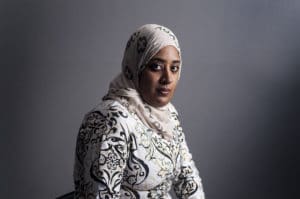
Zaina is still haunted by the sound of her mother screaming as Iraqi thugs killed her uncle, her mother’s brother.

James A. Bowey
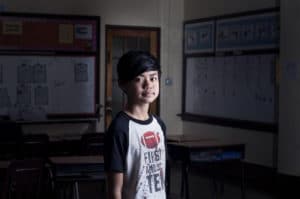
Yudathoo lived in a Thai refugee camp where the only toys to play with were a rubber band and a marble. Now he is thrilled to be able to play soccer – with a real soccer ball.
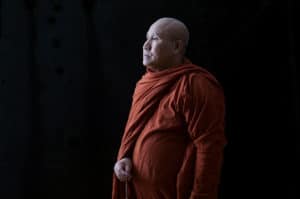
Yatha was beaten and tortured in Myanmar, but he miraculously survived.
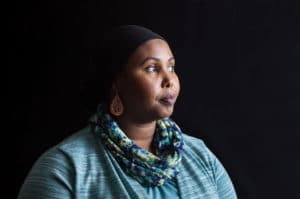
When Ayan was 12, she and her family had to flee violence in Somalia, and she learned quickly that to survive they had to leave everything behind and then keep abandoning the little they had with them just to have the strength to continue on the long walking trek.



